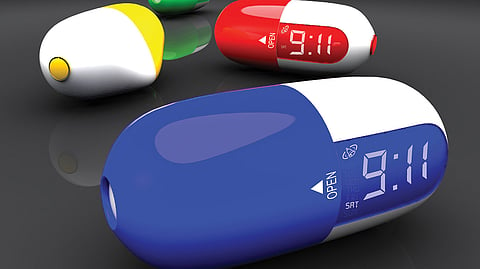
Irrespective of the product, the process remains the same. A design process is the DNA which infuses the style or approach of the designer in his work. Plunge. This is the time to get inspired and get passionate about the project. Try to develop a thorough understanding of the product, its user and its context. Next, plan.
Take all the learnings and insights from the first phase and transform these into an actionable plan. Define your goals, timeline, deliverables, constraints etc. Then play. Get wild with ideas. Scribble. Ideas are never judged nor evaluated. This is the time to test the limits of your imagination. Finally, precision. Scrutinize all your ideas with the parameters listed in the brief. Mix and match ideas to make individual concepts stronger. Detail out the final concepts, keeping all stakeholders (marketing, engineering etc.) on board. After all the tinkering, testing and evaluation, one gets selected and goes forth.
As architect Frank Lloyd Wright says "Form follows function - has been misunderstood. Form and function should be one, joined in a spiritual union." While working on a project, try not to consciously work on the two separately. It is imperative that the form be honest to the product's underlying purpose and not a false facade to hide it with. Like every designer, walk the tight rope between functionality and aesthetics on a daily basis. It's a skill that comes with practice.
Great products not only fulfill their function and look great, but are also able to evoke an emotional response. Be it the petal shaped medicine, the bee shaped vehicle, or the ball-shaped cart, they are all intended to evoke joy and play in the heart of the user. The key word here is 'surprise'. Give the viewer what they do not expect. Give them an experience through your product. Make your product do something no one ever thought it could do or be. Like the chair and slide furniture design; it's bound to make even adults feel like a kid again.
How you assimilate what you see at a particular moment of time, dictates the fate of your design. That's what sparks an idea in the mind, and a design on paper. Just like the jug design that was inspired by the Devnagri alphabet 'Ja' from the word 'Jal' (water). Typography is a visual manifestation of the culture it is rooted in. Hence, it was perfect to design a product that looked intrinsically Indian. So always look out for visual cues to contextualize your designs.
One never knows when inspiration strikes. It might be on the drive back home, in the washroom or at the library. But when it does, make sure you have a sketchbook handy. Doodle, write and even keep paper cuttings. As a rule, keep hard copies rather than put them in soon forgotten compute folders. You won't realize, but over time you are slowly inching towards having your personal 'Black Book' of ideas! Refer to this idea almanac constantly.
Eureka moments happen to us all, but most of us just let them slip out of our minds. At the same time, try to keep yourself updated about new trends, materials and technologies. This 'homework' not only enriches your work but also vastly improves the chances of 'connecting the dots' while working on a design problem.